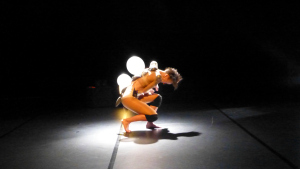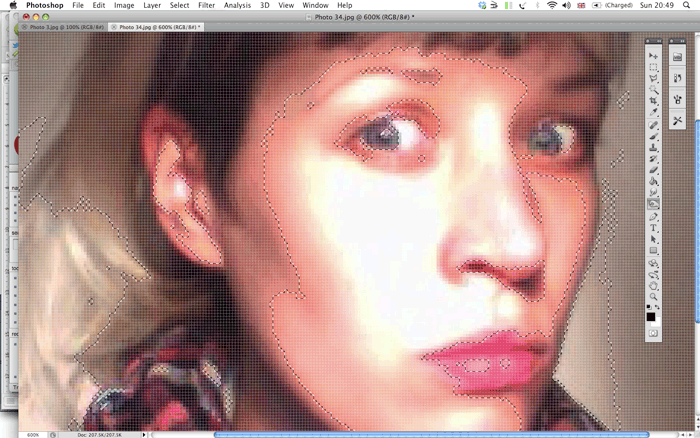
28 January 2014: The Cyborg’s New Clothes – Wearable Computing, Interactive Fashion and Skin 2.0
Cybersalon will start into the New Year with a special feature on wearables and interactive fashion beyond celebratory reviews of the latest gadget bling.
+++ S P E C I A L E V E N T +++
Get Tickets: £5.00, free for students with proof
Speakers:
– Prof. Johannes Grenzfurthner (monochrom)
– Jesse Darling
– Dr. Phoebe Moore
– Krõõt Juurak
Chair: Stefan Lutschinger & Adriana Smentek
Programme:
6:30 Reception
7:00 Performance Theia’s Aura by Simon Sarginson
7:05 Talks and Discussion
9:00 Lounge
DigitasLBi, 146 Brick Ln (Old Truman Brewery)
Afterparty at 1001 with DJs Jesse Darling and Krõõt Juurak
THE CYBORG’S NEW CLOTHES: WILL THE WEARABLE REVOLUTION DEVOUR ITS CHILDREN?
“In that fashion, a web of flax turns into a chimera.” – Karl Lagerfeld Marx
The wearable revolution is at the gates: Sensors and chip sets, the “peace dividend of the smartphone wars” as former WIRED editor in chief Chris Anderson puts it, are cheaper now than ever, making it easy for companies to incorporate sophisticated hardware into wearable devices. Many of the big names in consumer electronics have already released products at the International CES in Las Vegas. Like it or not, 2014 will be the year of the wearable. January’s Cybersalon will touch of the following topics: Is Google Glass the continuation of CCTV by other means? How will the commodification and intrusion of our bodies by wearables change our perception and understanding of subjectivity? Is self-logging a trendy self-management strategy or does it create an El Dorado for personal data dealers? In which ways can critical artists respond to the challenges raised by the rapid human-machine integration? How can we tap the subversive potential of wearable technology? How can interactive fashion explore subjectivity as a nexus between inside, outside and in-between spaces? How can artificial pneumatic computer-controlled skin help us outsmart surveillance? Over the last two decades, the dialectic of political economy and technological progress has turned the vintage utopias of the 90s on their dystopian feet: 20 years ago, media art pioneer Nam June Paik had imagined the future Internet user as a Deleuzian prototype nomad warrior, cycling the Electronic Superhighway on a bike, dressed in a fancy data suit, wearing a neat surrealist Dali-style VR helmet. In 1995, MIT Media Lab founder Nicolas Negroponte had dreamt of the Body Net as the digital road warrior’s kit upgrade, connecting your shoe computer to a wrist keyboard and head-up display: “Activating your body means that everything you touch is potentially digital. A handshake becomes an exchange of digital business cards, a friendly arm on the shoulder provides helpful data, touching a doorknob verifies your identity, and picking up a phone downloads your numbers and voice signature for faithful speech recognition.” In 2014, however, the reality principle has gained the upper hand. We see supermarket workers in the UK wearing body-borne computers for performance monitoring and location tracking, a technology formerly employed in sports or pet-keeping. Shops in London are secretly snooping on customers by targeting their mobile phones through Wi-fi. In that fashion, the ‘cyborg’s new clothes’ are capable of leaking our personal data to dark global data markets in real-time. Without a retailored Esprit de Costumes, we may all unwillingly become participants in a virtual World Naked Bike Ride.
Theia’s Aura by Simon Sarginson
The ancient Greeks believed that we created sight by shining light from our eyes. Hence Theia, the goddess of sight, is also called Euryphaessa meaning “wide-shining”. Theia’s Aura illuminates the hidden qualities of human motion and makes the more ethereal qualities of it visible through digital Illusion. It enhances and expands our vision of motion and speed by using visible and invisible light. The camera, like Theia’s eye, shines out infrared light to illuminate the dancer and records back the resulting silhouette, it passes that image to the software which analyses motion and manifests it digitally in projected light overlaying our ordinary vision of the dancer. The technology, rather than inviting us to succumb to its abstract inhuman interface and getting more intimate with it, hides itself from the viewer and produces a reactive cloud using the body as a language to create a fantastical spectacle manifesting the imagination of the performer.

Prof. Johannes Grenzfurthner is an artist, writer, curator, and theatre and film director. He is the founder, conceptualist and artistic director of monochrom, an international art and theory group. Johannes holds a professorship in art theory and art practice at Joanneum Graz and is a distinguished researcher in the fields of recreational robotics, hybrid intelligence and human-machine integration.
– www.monochrom.at
– Interview with Furtherfield
– http://en.wikipedia.org/wiki/Johannes_Grenzfurthner
In 2007 he founded the sex & technology festival Arse Elektronika (San Francisco, US). Since 2002 he hosts Roboexotica (Vienna, A), the world’s first and leading festival for cocktail robotics.

Jesse Darling is an artist, curator and occasional essayist, researching the deep links between technology, power and experience. Stimulated by a profound thinking around modes of subjectivity on and offline in late capitalism, JD works in installation, digital, “dasein by design”, and the space in which performance becomes unmediated experience. Cybersalon has asked Jesse to have a critical look at – and through – Google Glass.
http://bravenewwhat.tumblr.com
The People Speak
Interview with Mute Magazine

Dr. Phoebe Moore is an active researcher and a Senior Lecturer in International Relations at Middlesex University, School of Law. Phoebe has conducted fieldwork in Seoul, Korea several times and in particular has worked with trade unions, researchers and social movements around issues to do with vocational training, education reforms and industrialisation. She has published a number of books, articles and reports about labour struggle, industrial relations and the impact of technology on everyday lives.
http://phoebevmoore.wordpress.com/
 Krõõt Juurak is a choreographer and performer whose work (performances, presentations, texts, workshops, mood shifts) challenges fixed definitions of choreography and performance. So, while describing Juurak as a choreographer and performer is too limiting, the comparison still offers an interesting proximity from which to view her production. Krõõt Juurak is also a member of Chicks on Speed, a multinational musical and fine art ensemble, who apply punk-inspired DIY-ethic to performance art, collage graphics and fashion.
Krõõt Juurak is a choreographer and performer whose work (performances, presentations, texts, workshops, mood shifts) challenges fixed definitions of choreography and performance. So, while describing Juurak as a choreographer and performer is too limiting, the comparison still offers an interesting proximity from which to view her production. Krõõt Juurak is also a member of Chicks on Speed, a multinational musical and fine art ensemble, who apply punk-inspired DIY-ethic to performance art, collage graphics and fashion.
– www.kr66t.com
– www.chicksonspeed.com
– http://en.wikipedia.org/wiki/Chicks_on_Speed




